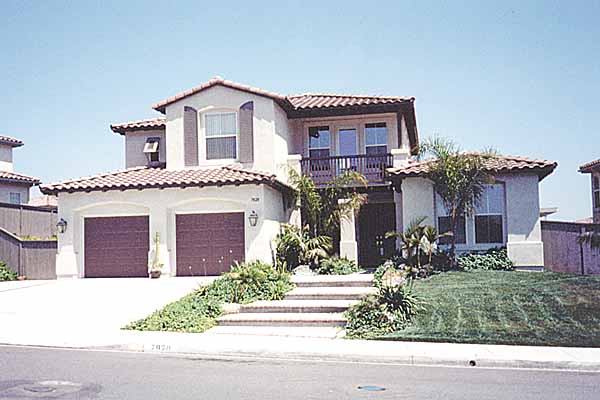ASSEMBLAGE
The Rise of Assemblage in Real Estate Development
In recent years, the concept of assemblage has gained significant traction in the real estate industry, particularly in urban areas where land scarcity and the demand for large-scale developments are prominent. Assemblage refers to the process of acquiring multiple parcels of land to create a larger, consolidated property for development. This practice has become increasingly popular as developers seek to maximize the potential of available land and create more ambitious and impactful real estate projects.
Understanding Assemblage in Real Estate
What is Assemblage?
Assemblage involves the strategic acquisition of adjacent or nearby properties with the intention of combining them into a single, larger parcel of land. This process typically requires careful planning, negotiation, and often involves navigating various zoning and regulatory considerations. The goal of assemblage is to unlock the potential of fragmented or underutilized land by consolidating it into a more valuable and cohesive development site.
Factors Driving Assemblage
Several factors contribute to the growing prevalence of assemblage in real estate development:
Scarcity of Available Land:
In densely populated urban areas, finding large contiguous parcels of land for development is a challenge. Assemblage allows developers to overcome this limitation by aggregating smaller lots to create more substantial development opportunities.
Desire for Larger-Scale Projects:
As urbanization continues, there is a growing demand for expansive mixed-use developments, commercial centers, and residential complexes. Assemblage provides a means to assemble the necessary land for these ambitious projects.
Maximizing Land Use:
As land becomes more valuable, there is a greater emphasis on maximizing its potential. Assemblage enables developers to optimize land use by creating larger, more impactful developments that align with market demand and economic feasibility.
The Process of Assemblage
The Process of Assemblage
Identifying and Acquiring Properties
The first step in the assemblage process involves identifying and negotiating the acquisition of individual properties that, when combined, form a desirable development site. This often requires a deep understanding of local real estate markets, as well as strong negotiation skills to secure the necessary parcels.
Navigating Regulatory Considerations
Assemblage is not without its challenges, particularly when it comes to navigating zoning laws, land use regulations, and community considerations. Developers must carefully assess the feasibility of combining properties and ensure compliance with applicable regulations.
Design and Development
Once the parcels have been assembled, the design and development phase begins. This stage involves creating comprehensive plans for the utilization of the consolidated land, taking into account the specific needs of the market, as well as the logistical and architectural considerations of the project.
Benefits and Challenges of Assemblage
Benefits
Unlocking Value:
Assemblage can significantly increase the value of the land by creating opportunities for more lucrative and impactful developments.
Customization:
Developers have the flexibility to create tailored projects that meet the specific needs of the market and community.
Economic Impact:
Large-scale developments resulting from assemblage can have a positive economic impact, creating jobs and driving local commerce.
Challenges
Complexity:
Assemblage projects are often complex and require extensive due diligence, negotiation, and coordination among multiple parties.
Regulatory Hurdles:
Navigating regulatory and zoning challenges can be time-consuming and may present unforeseen obstacles.
The Future of Assemblage
As urbanization and the demand for innovative real estate solutions continue to grow, the practice of assemblage is expected to remain a prominent strategy for developers seeking to create impactful, large-scale projects. With careful planning, strategic execution, and a thorough understanding of local dynamics, assemblage offers the potential to unlock new opportunities and shape the future of real estate development.
In conclusion, the concept of assemblage represents a compelling approach to addressing the challenges of land scarcity and maximizing the potential of real estate in urban environments. By carefully navigating the complexities of assemblage, developers can unlock new possibilities and contribute to the evolution of our cities through innovative, large-scale developments.
MORE REAL ESTATE TERMS
A, B, C, D, E, F, G, H, I, J, K, L, M, N, O, P, Q, R, S, T, U, V, W, X, Y, Z
Featured New Home

Featured Mortgage Brokers
- WESTSTAR MORTGAGE CORP, TUMWATER, WA
2620 R W JOHNSON RD SW # 104
TUMWATER, WA 98512 - EVERETT FINANCIAL INC, ORANGE BEACH, AL
25910 CANAL RD STE N
ORANGE BEACH, AL 36561 - SUMMIT MORTGAGE INC, FORT WAYNE, IN
8614 SAINT JOE RD
FORT WAYNE, IN 46835 - American Finance-Thomasville, mortgage broker in Thomasville, GA
15179 US Hwy 19 South
Thomasville, GA 31792 - NEW DAY FINANCIAL LLC, FULTON, MD
8171 MAPLE LAWN BLVD STE 300
FULTON, MD 20759